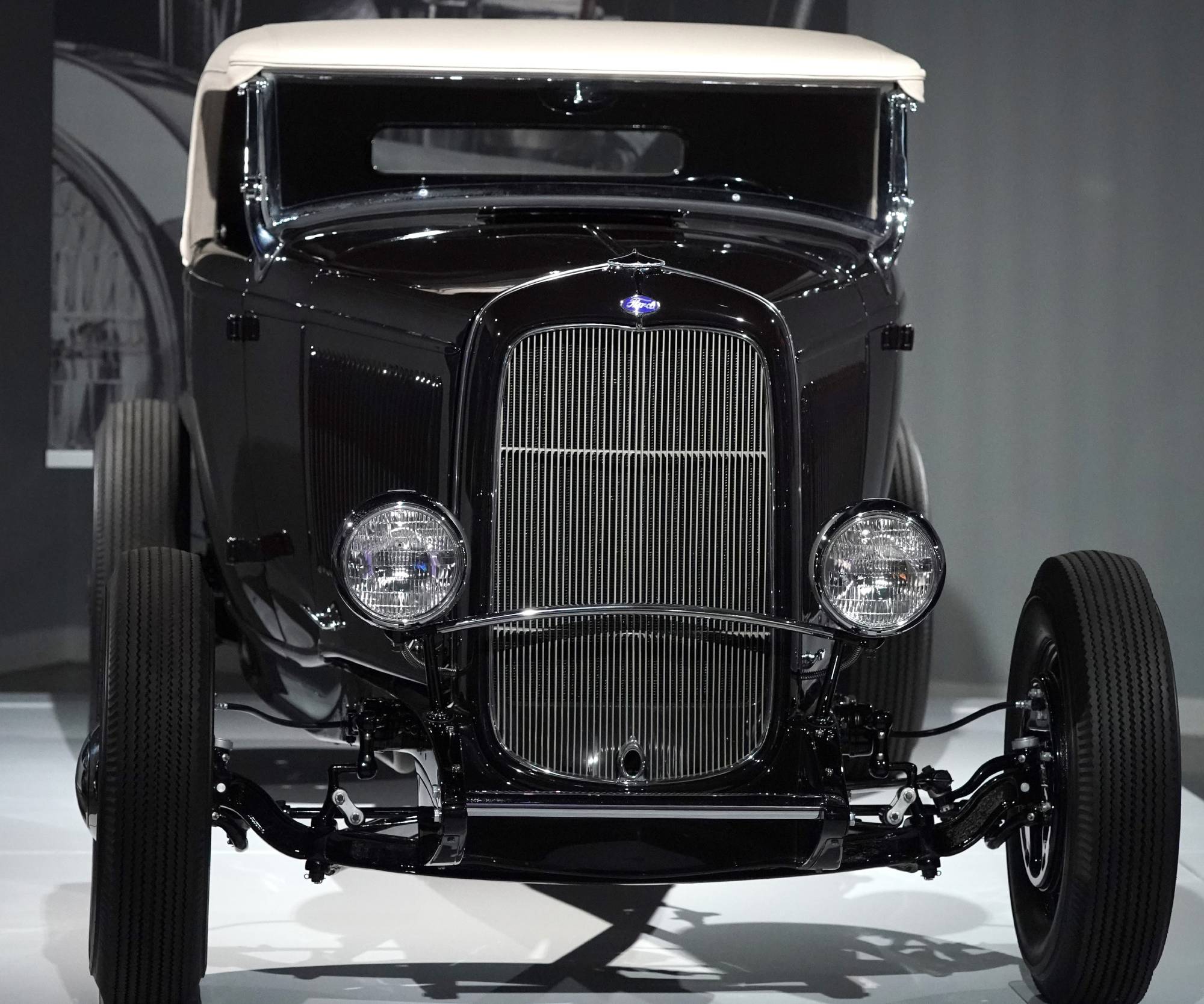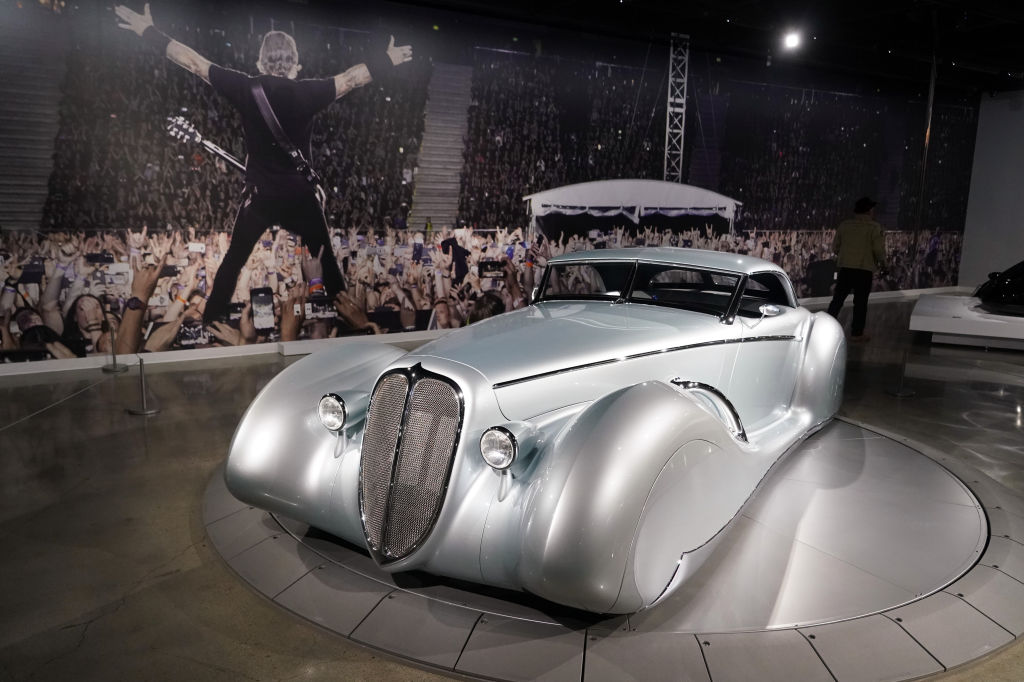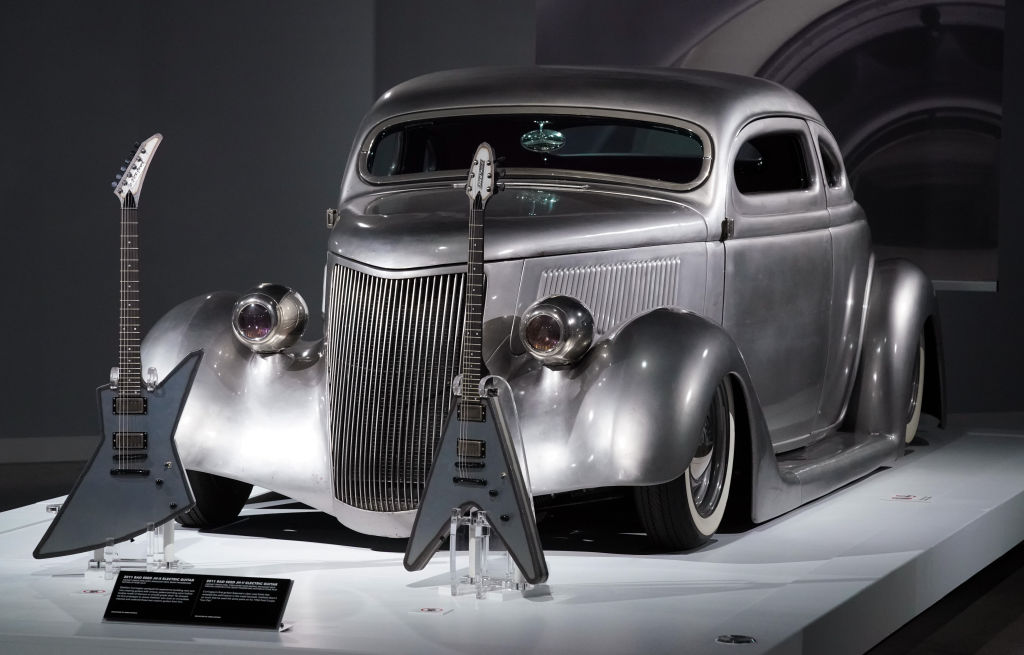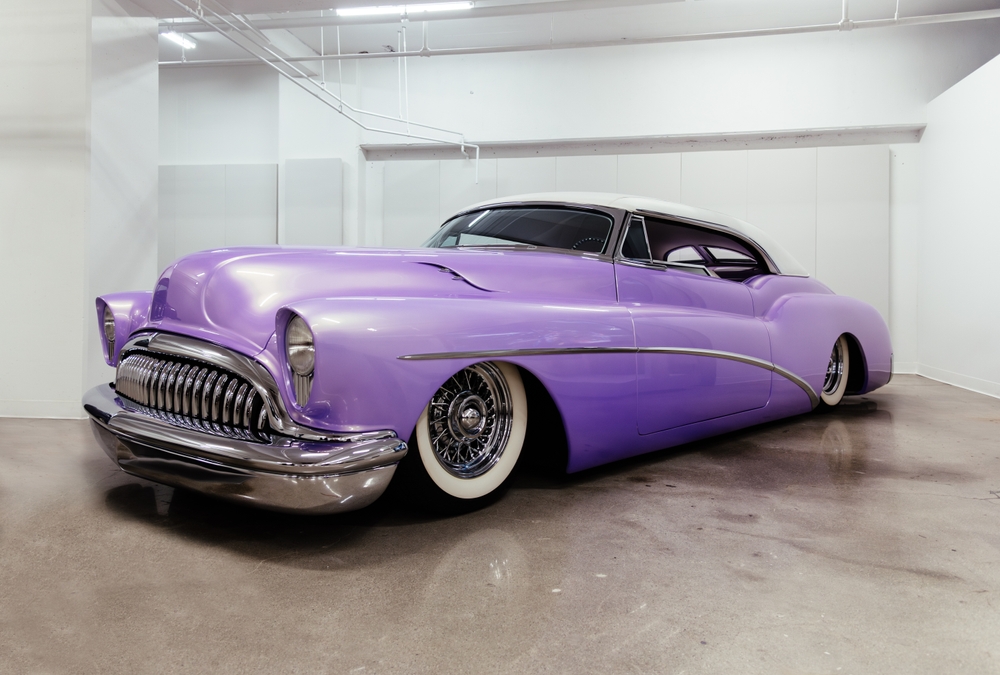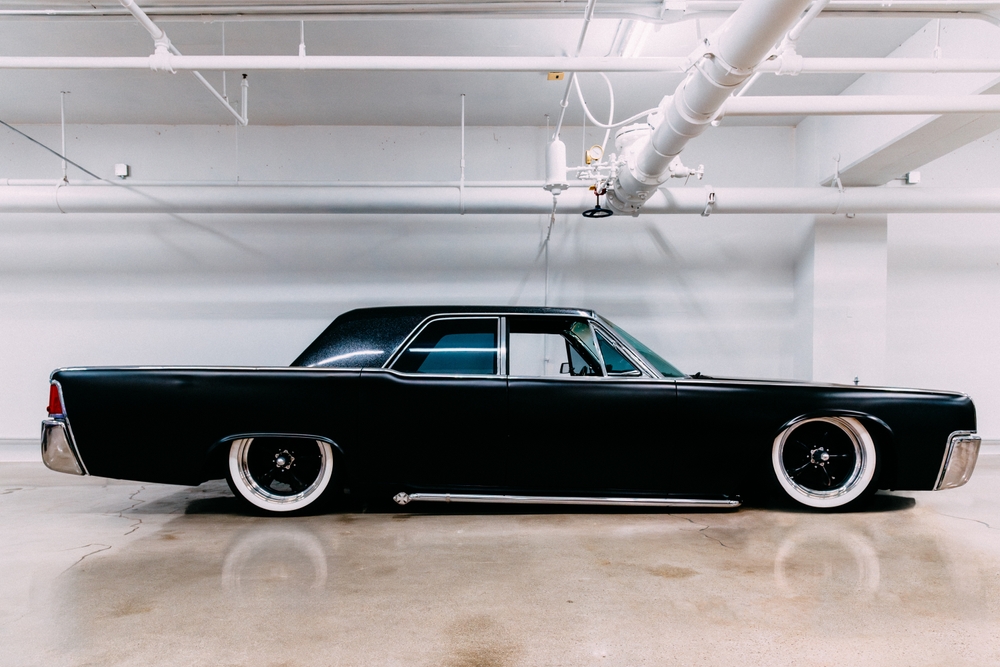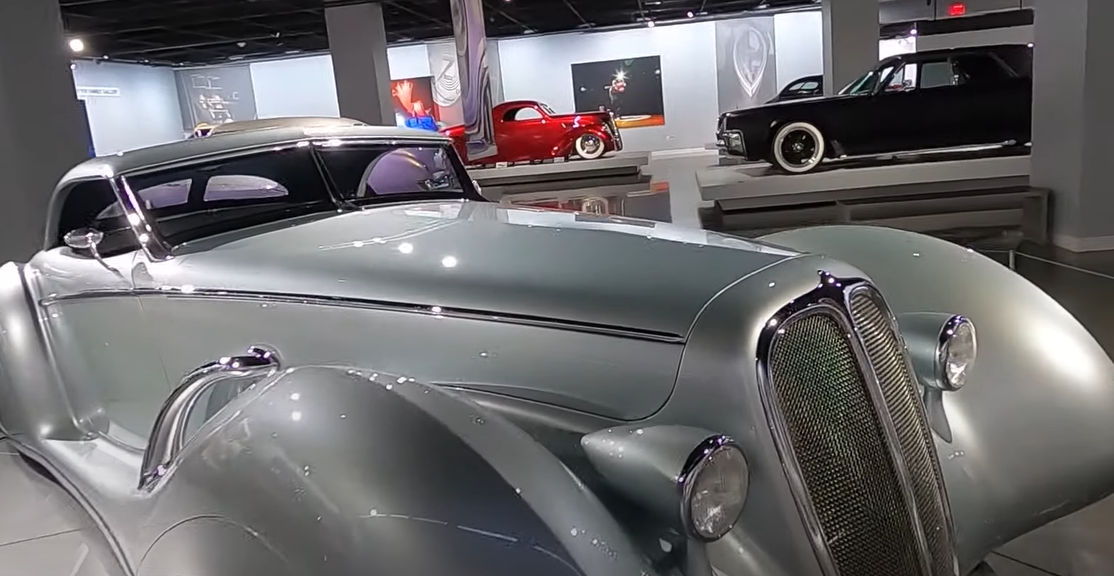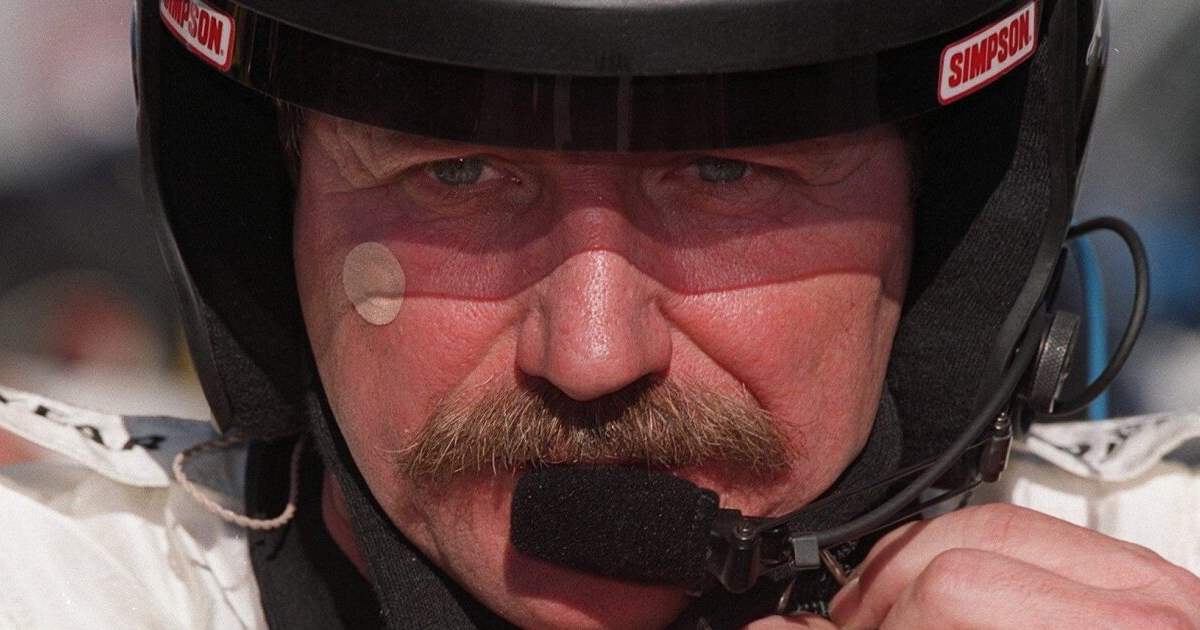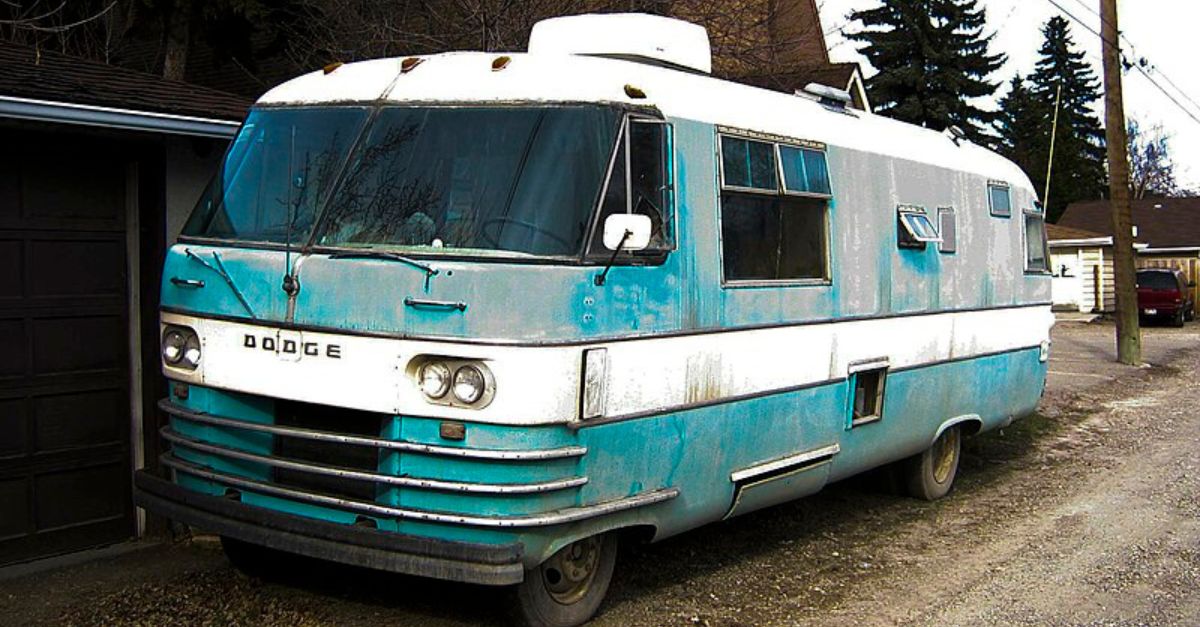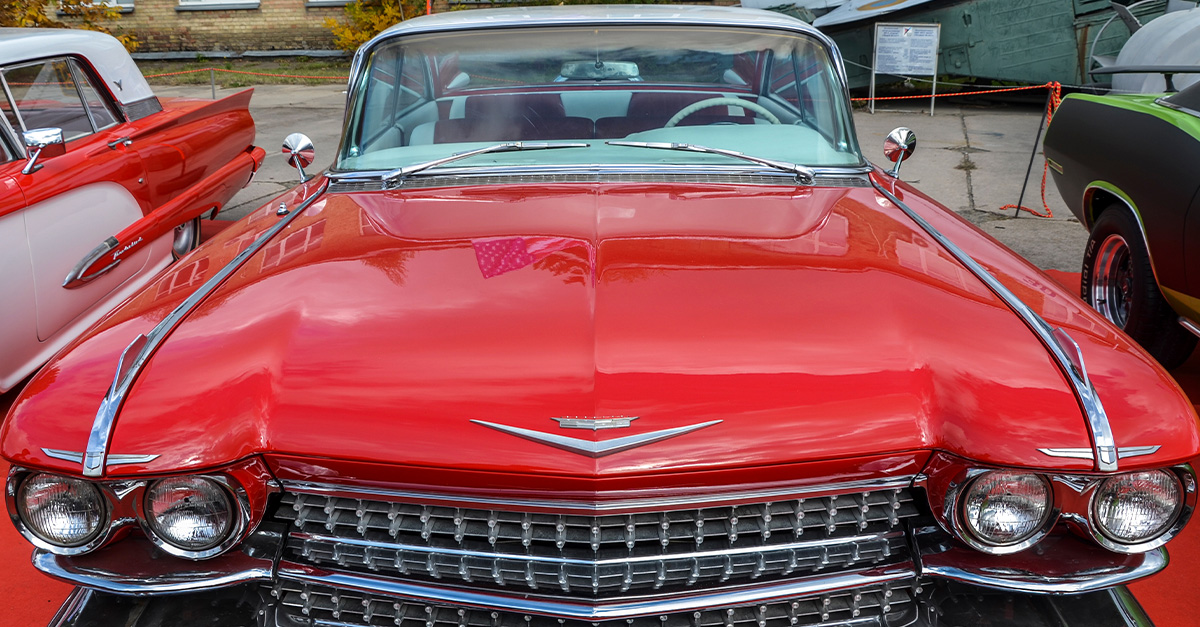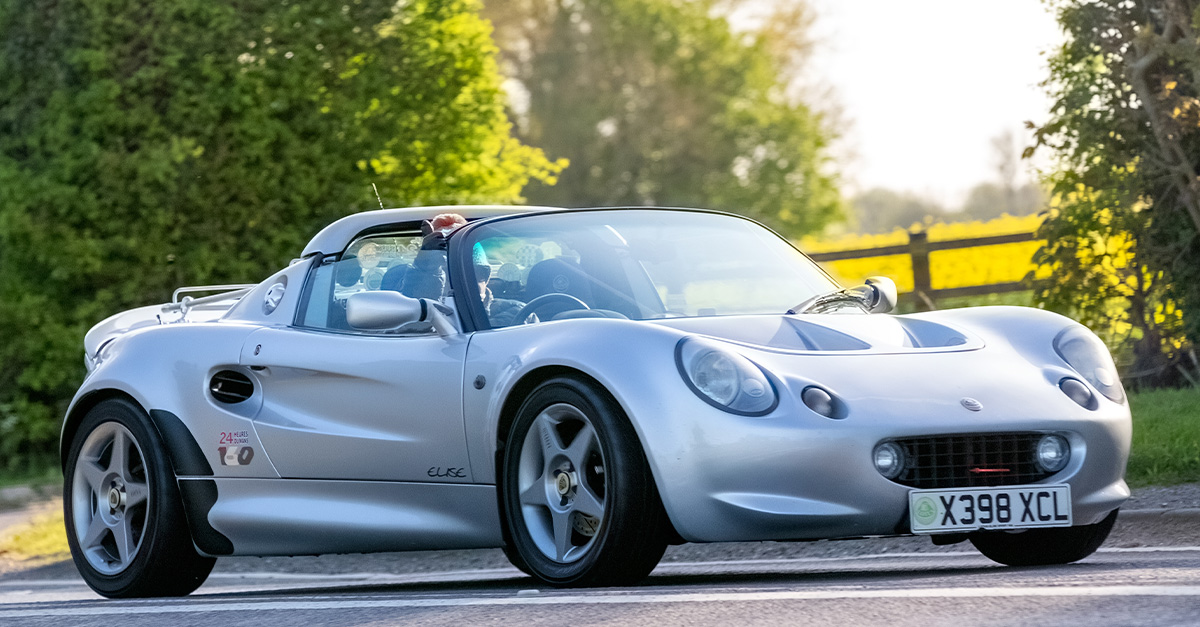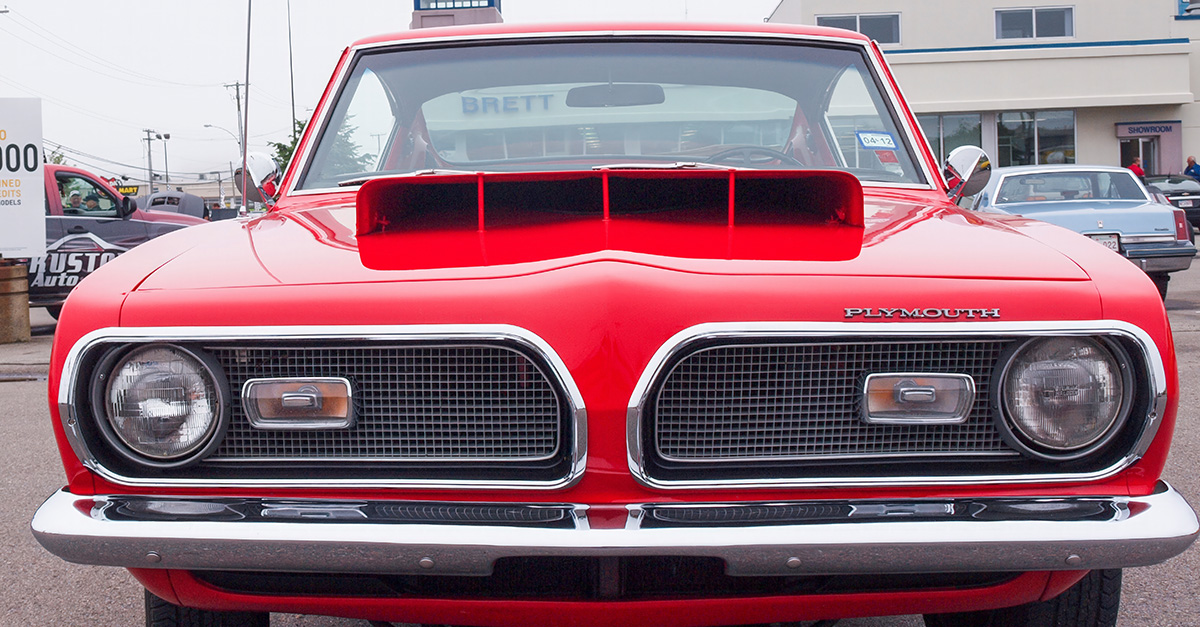Nothing Else Matters
Metallica frontman James Alan Hetfield is an avid car collector with excellent taste in classic American automobiles—especially hot rods.
But Hetfield is not your typical car collector who sees a car he wants and buys it. Instead, he visualizes a classic car and then goes and builds it. The majority of vehicles in his car collection were custom-made just for him—and to say they’re impressive would be an understatement.
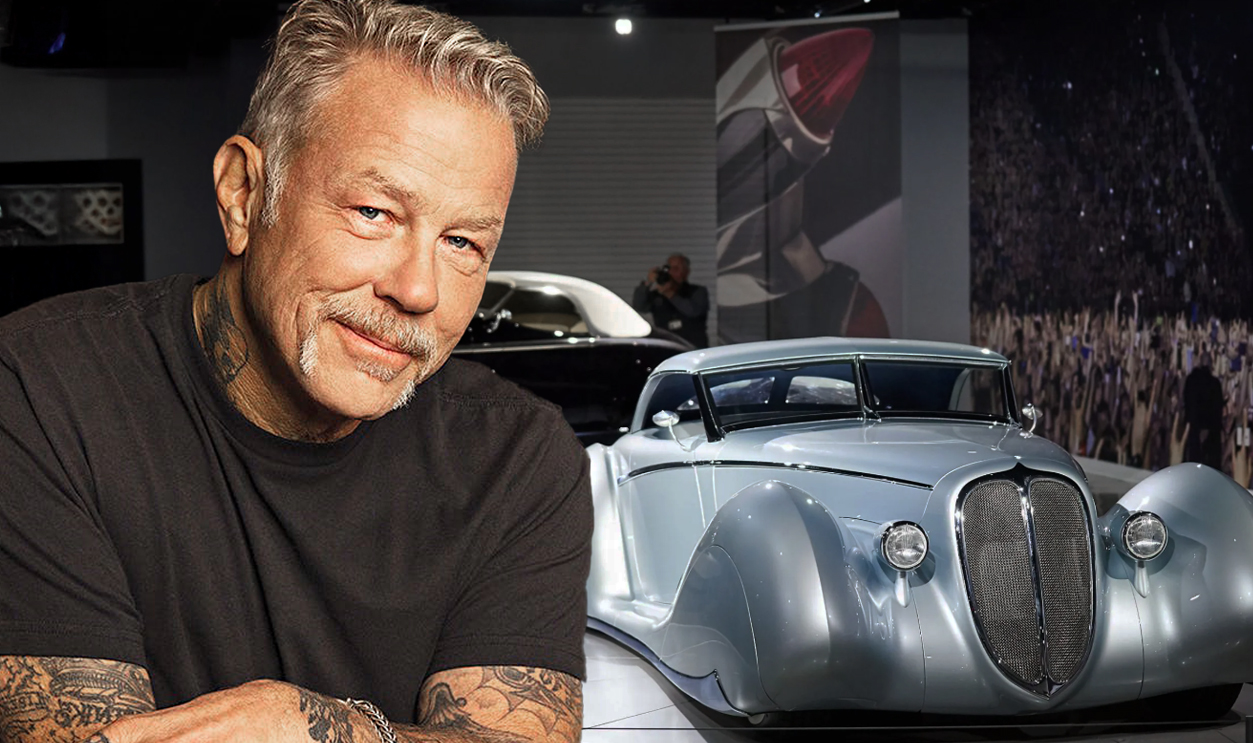
The 1932 Ford Roadster ‘Blackjack’
Hetfield has a Ford tattoo on his right biceps, which some say is strategically placed close to his heart—but nothing comes quite as close as this all-American hot rod.
A true labor of love, Hetfield made sure that his 1932 Deuce Coupe only featured parts that were period-appropriate—including old-school Stromberg carburetors, Edelbrock air intakes, and a 296-cubic inch Ford V8. Most of the parts came from old wrecks and barn finds, but some unavailable pieces had to be built by hand.
And his inspiration is actually quite endearing.
The 1932 Ford Roadster ‘Blackjack’
According to Hetfield, “The whole idea was 'What would it be like if some kid from the 1940s got hold of his dad's old car and wanted to hot rod it?' That was fun. That was more of a story we were trying to follow".
Blackjack follows the Hot Rod playbook closely, and car builder Josh Mills helped bring this vision to life—making it one of Hetfield’s top favorites.
But this authentic recreation is not the only one.
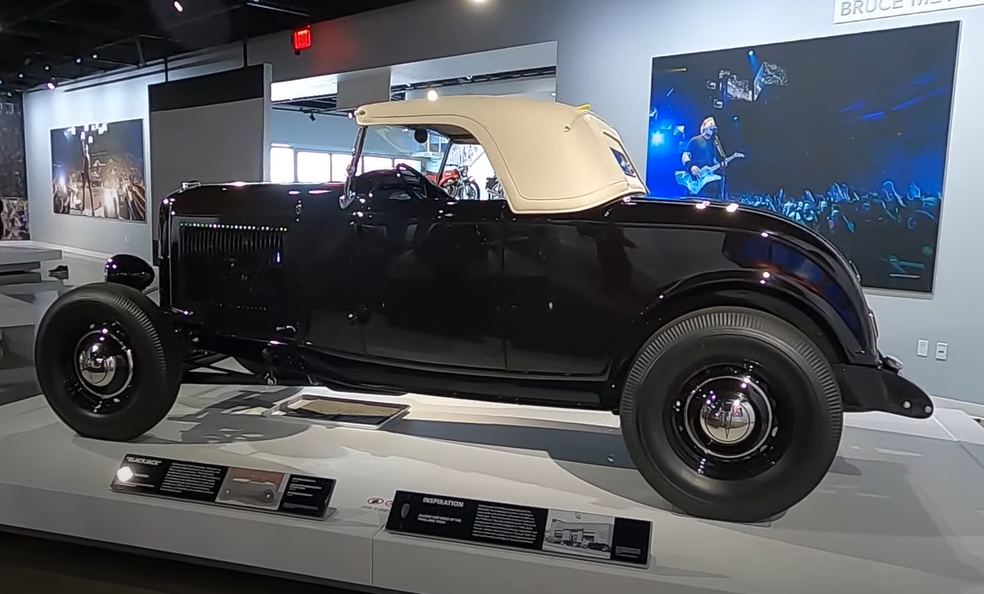 The James Hetfield Collection, Petersen Automotive Museum
The James Hetfield Collection, Petersen Automotive Museum
The 1934 Packard ‘Aquarius’
Hetfield’s 1934 Packard, named Aquarius, is a unique and special addition to his garage. The car’s style is reminiscent of a French car from the same era, and has a distinctive teardrop shape—which the crew created themselves, including the hand-shaped aluminum sheet metal silhouette.
Crafted by Rock Dore and the RD Kustoms crew, the vehicle's air suspensions are installed on a modified Morrison chassis.
But this beauty is also a beast.
The 1934 Packard ‘Aquarius’
The Packard Eleventh Series Standard Eight Model 1101, produced in 1934, had an eight-cylinder engine with a 5.2-liter capacity that could generate 120 horsepower.
But for Aquarius, Hetfield replaced the old engine with a 6.2-liter LS3 V8. There are claims that it can achieve a maximum speed of 100 mph and can accelerate from 0 to 60 mph in just 20.6 seconds.
The market value on this stunner is worth more than $115,000.
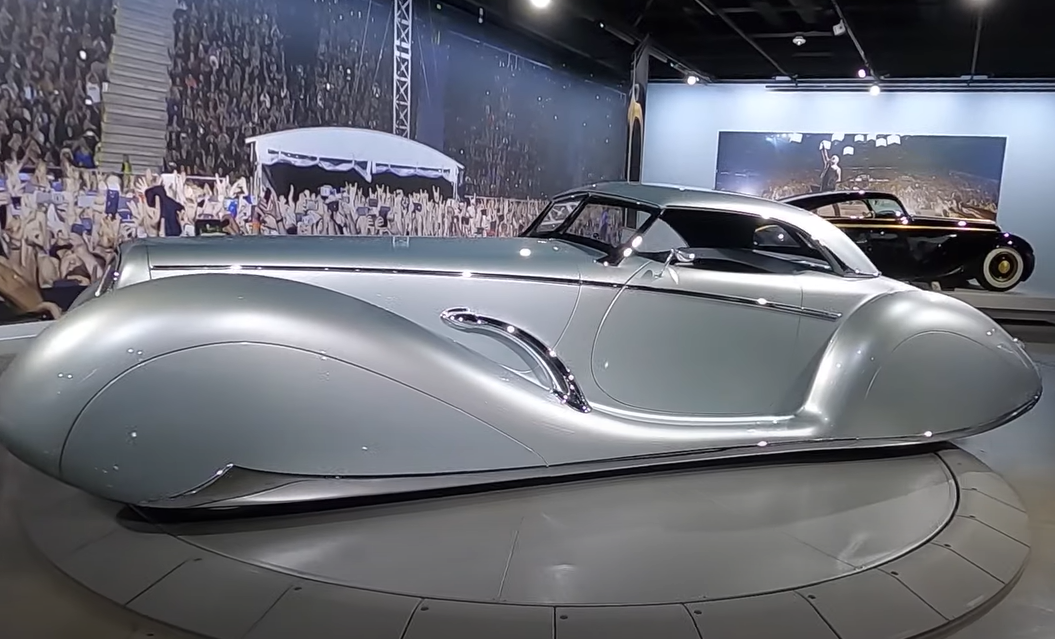 The James Hetfield Collection, Petersen Automotive Museum
The James Hetfield Collection, Petersen Automotive Museum
1936 Ford ‘Iron Fist’
Hetfield was holding onto an old, worn 1936 Ford for several years before he decided to show the old beater some love. In 2006, he enlisted in Blue Collar Customs to give it a major overhaul. This project spanned several years—but it was worth every minute.
What makes this car special is the bare metal clear-coated body work, reminding us that sometimes the best paint is no paint.
1936 Ford ‘Iron Fist’
Even Hetfield himself got his hands dirty with this one, welding and shaping some elements of the car. The '36 Ford received an air suspension system, a newly routed exhaust system, and a tweak to the airbag system.
And the interior is just as striking.
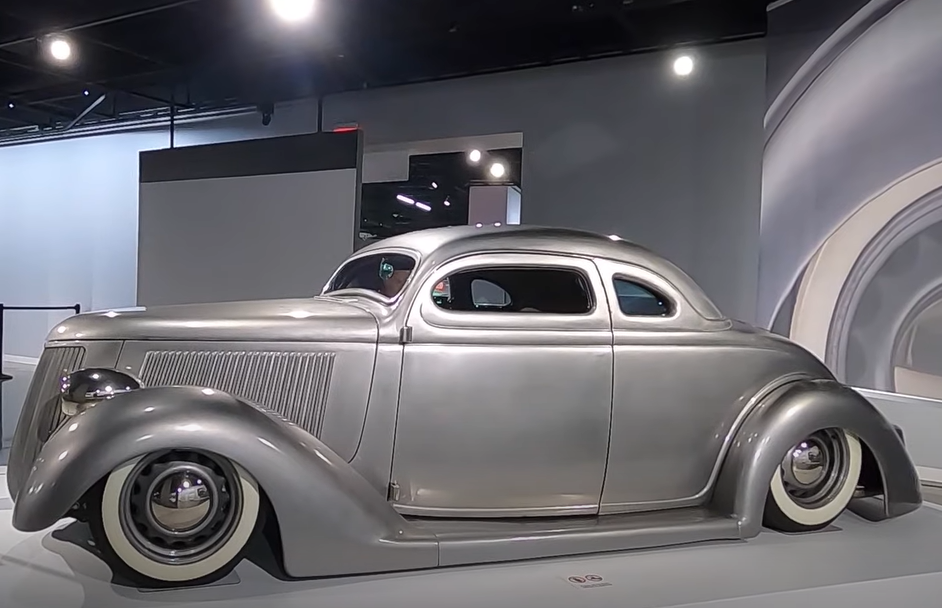 The James Hetfield Collection, Petersen Automotive Museum
The James Hetfield Collection, Petersen Automotive Museum
1936 Ford ‘Iron Fist’
Inside the Iron Fist are custom-made oxblood leather seats and steering column, and the interior was finished in nickel. The other panels were black gloss. Hetfield took the car across the country, so it was, at one point, equipped with a stereo and AC—but those were later covered up to protect the interior’s authentic feel.
The 1936 Ford Model 48 had a 3.6-liter V8 engine that produced 85 horsepower and 144 pound-feet of torque. The coupe’s specs are a mystery, but it’s believed it can reach at least 65 mph.
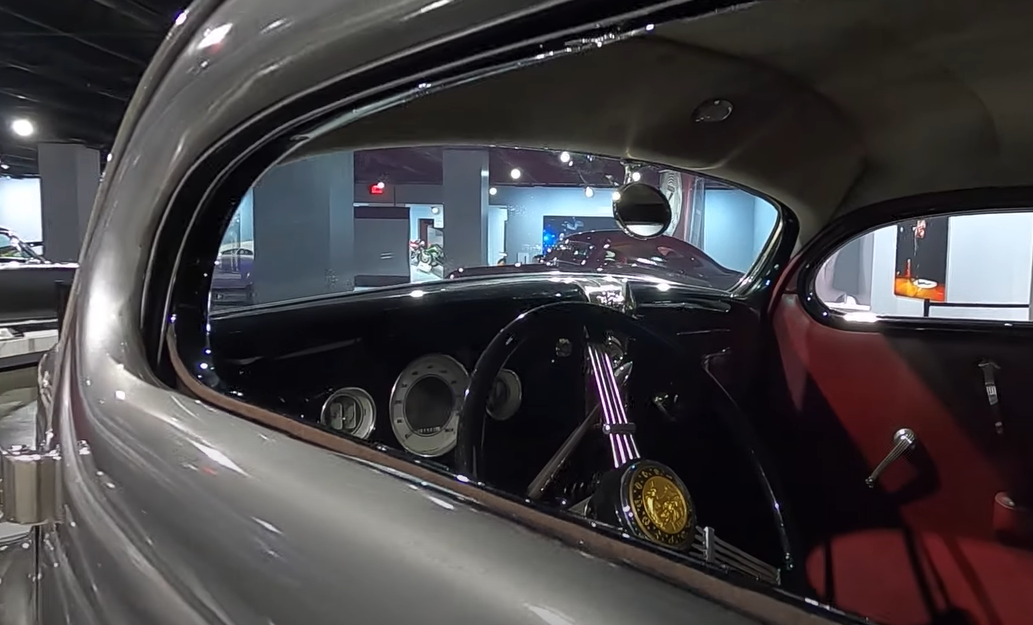 The James Hetfield Collection, Petersen Automotive Museum
The James Hetfield Collection, Petersen Automotive Museum
The 1936 Auburn ‘Slow Burn’
Hetfield’s 1936 Auburn boattail is the most valuable vehicle in his collection, with an estimated value of $800,000. The inspiration came after seeing Glenn Pray’s fiberglass reproduction of the 1936 Auburn 852. Hetfield then purchased a genuine Pray vintage body and handed it over to car builder Rock Dore to work his magic.
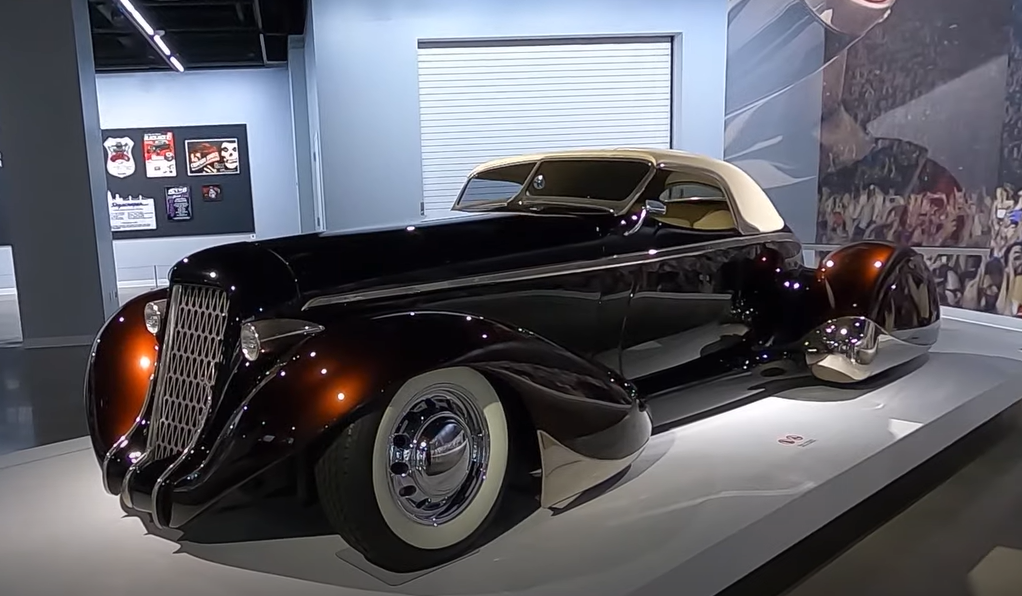 The James Hetfield Collection, Petersen Automotive Museum
The James Hetfield Collection, Petersen Automotive Museum
The 1936 Auburn ‘Slow Burn’
Dore altered the car from bumper to bumper and hand-built most of the panels. When the body work was finished, they painted it in two different colors. Most of the dials and gauges were modified to give it a vintage feel, with Egyptian leather used throughout the cabin.
But it wasn’t all body work—he took things up a notch under the hood, too.
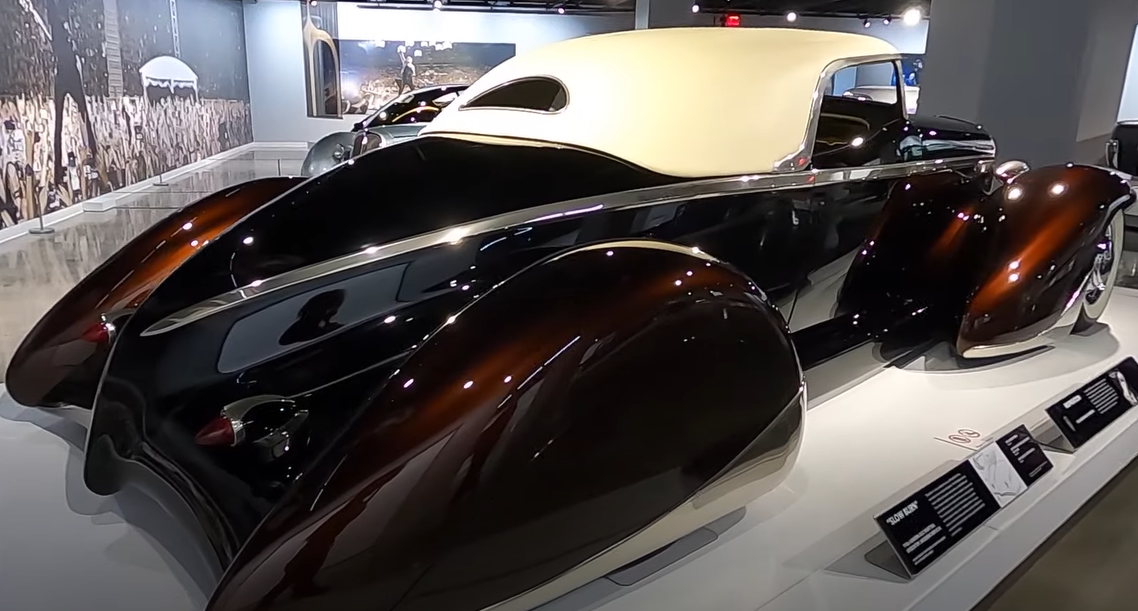 The James Hetfield Collection, Petersen Automotive Museum
The James Hetfield Collection, Petersen Automotive Museum
The 1936 Auburn ‘Slow Burn’
The 1936 Auburn Boattail Speedster is supercharged with a 4.6-liter eight-cylinder engine, and produces 150 horsepower and 230 pound-feet of torque.
Hetfield, though, had a 350-cubic inch ZZ4 Ford crate motor installed. It now produced 350 horsepower and 405 pound-feet of torque. He also put in an automatic transmission, and the vehicle rode on 15-inch forged wheels and a RideTech air suspension system.
Hetfield’s award-winning Slow Burn is one of the most beautiful cars in his collection.
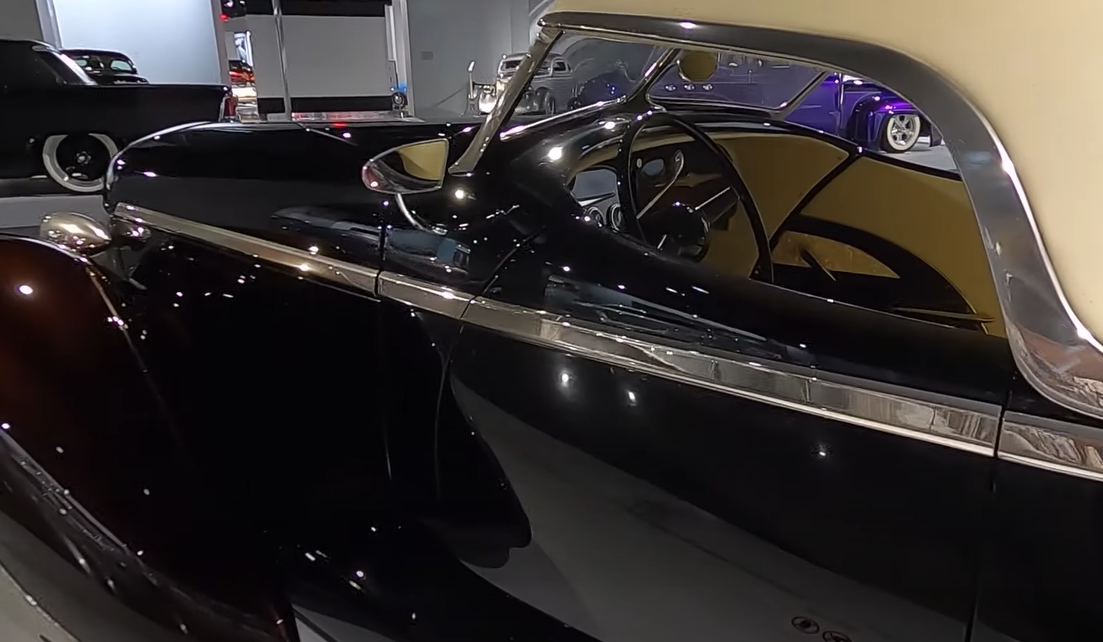 The James Hetfield Collection, Petersen Automotive Museum
The James Hetfield Collection, Petersen Automotive Museum
The 1937 Lincoln Zephyr’ Voodoo Priest’
Hetfield’s 1937 Lincoln Zephyr, creatively named Voodoo Priest, was once a rusty old abandoned vehicle before Hetfield got his hands on it. He then called his buddy Rick Dore back for another big job.
Aside from the vibrant red paint job and hot rod aesthetic, the crew made minor adjustments to the car’s front end, but most of the work was on the back—including '38 rear quarters to stretch it out.
Inside boasts a personalized white and red upholstery, with the rest painted a jet black. But this time, Hetfield kept things under the hood mostly the same.
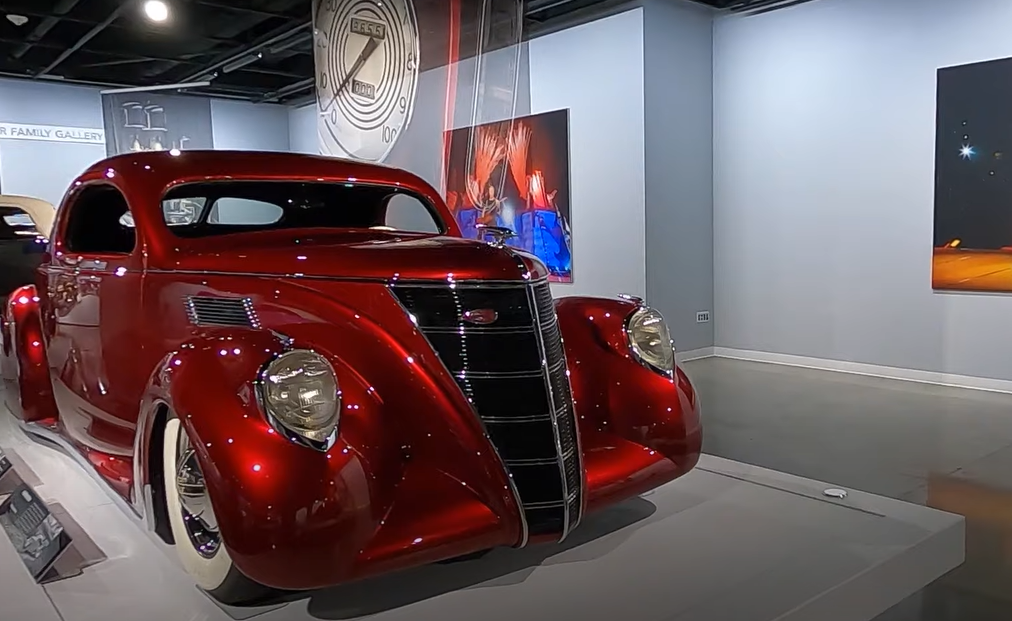 The James Hetfield Collection, Petersen Automotive Museum
The James Hetfield Collection, Petersen Automotive Museum
The 1937 Lincoln Zephyr’ Voodoo Priest’
Under the hood of the Voodoo Priest is its original 4.4-liter flathead V12 engine, which has been restored. The standard configuration includes a three-speed selective sliding manual transmission in the center console and an engine with 110 horsepower and 186 pound-feet of torque.
However, Hetfield had a C4 automatic transmission installed to make the vehicle more user-friendly.
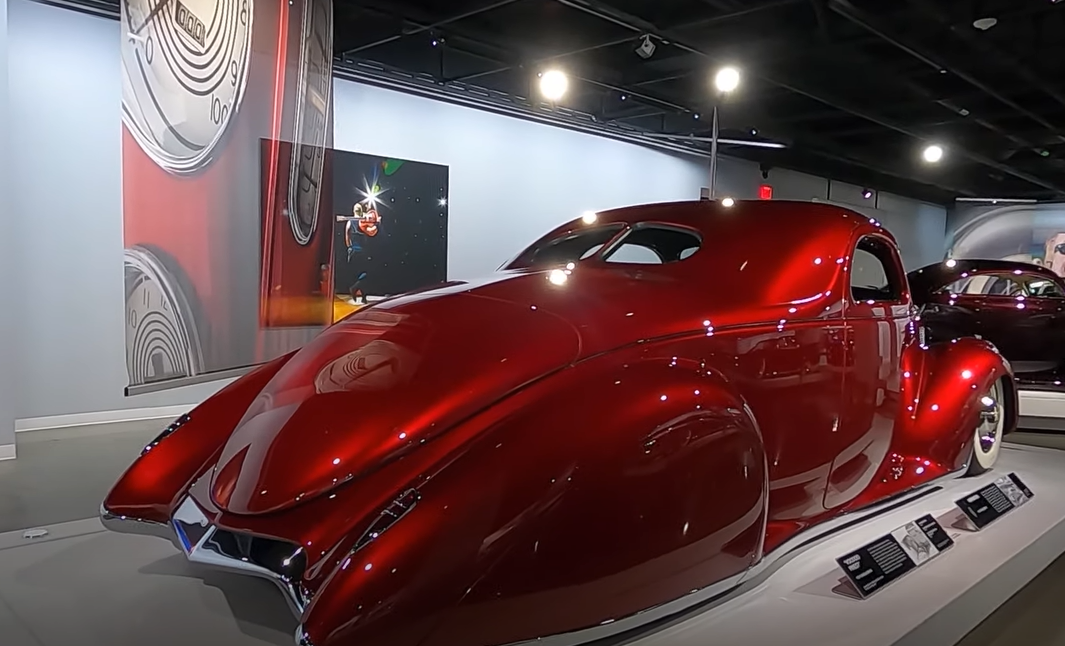 The James Hetfield Collection, Petersen Automotive Museum
The James Hetfield Collection, Petersen Automotive Museum
The 1937 Ford Coupe ‘Crimson Ghost’
Another striking red design in Hetfield’s collection is the 1937 Ford Coupe, named Crimson Ghost for its dark red hue and chrome accents. But before his project began on this one, Hetfield referred to it as “an ugly duckling”—which may just be why he fell in love with it to begin with.
He called up Rick Dore once again, and the crew carefully preserved the original concept while smoothing out any rough edges. The only significant body work done was having the roof lopped off, giving it a curvier appearance.
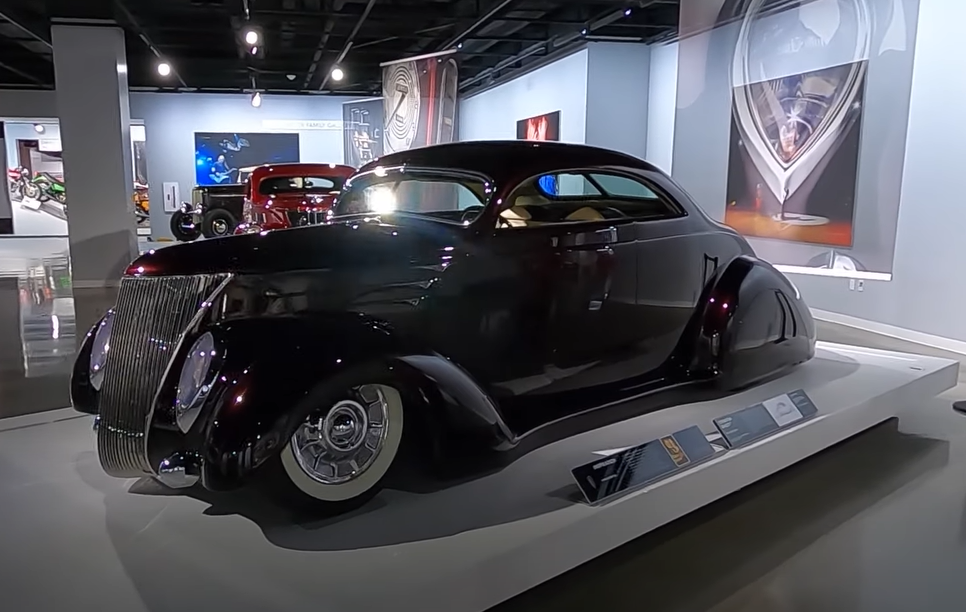 The James Hetfield Collection, Petersen Automotive Museum
The James Hetfield Collection, Petersen Automotive Museum
The 1937 Ford Coupe ‘Crimson Ghost’
Under the hood is a 3.6-liter naturally aspirated V8 engine that produces 85 horsepower and 153 pound-feet of torque. A three-speed sliding mesh manual gearbox is coupled to the engine, and the coupe’s top speed is 76 mph.
The improved design, including the Hetfield-modified grille, has certainly taken this coupe up a notch from “ugly duckling”.
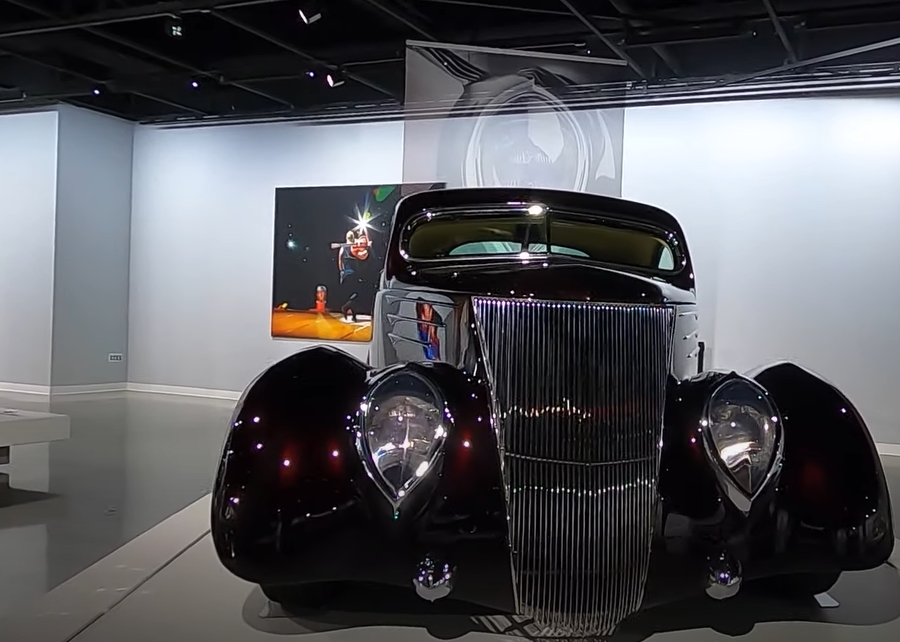 The James Hetfield Collection, Petersen Automotive Museum
The James Hetfield Collection, Petersen Automotive Museum
The 1948 Jaguar ‘Black Pearl’
One of Hetfield’s most unique customizations is his Black Pearl, based on a 1984 Jaguar Mark IV. According to Hetfield himself, “We started out with a left-hand drive Jaguar, but we couldn't get what we wanted out of it so we just kept drawing".
The car was modified, and then modified some more, and some more, which is why it includes a bit of European coachbuilding, as well as some art-deco inspiration, and of course, some American custom car attitude.
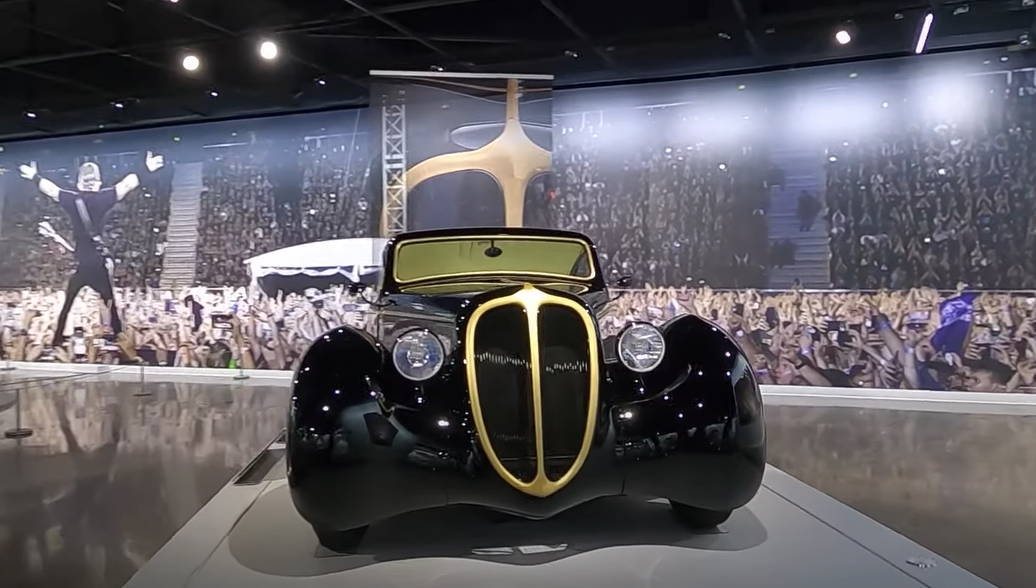 The James Hetfield Collection, Petersen Automotive Museum
The James Hetfield Collection, Petersen Automotive Museum
The 1948 Jaguar ‘Black Pearl’
The body work was done by specialists Marcel and Luc De Lay, who hammered it out of aluminum by hand. AccuAir air-ride suspension cut the original Jaguar’s body and lowered it.
There’s somewhat of a mishmash of makes and models found within, including a steering wheel from a Lincoln, a gauge from a 1934 Plymouth, and quality carpeting from a Mercedes-Benz sedan.
They even made some swaps under the hood, too.
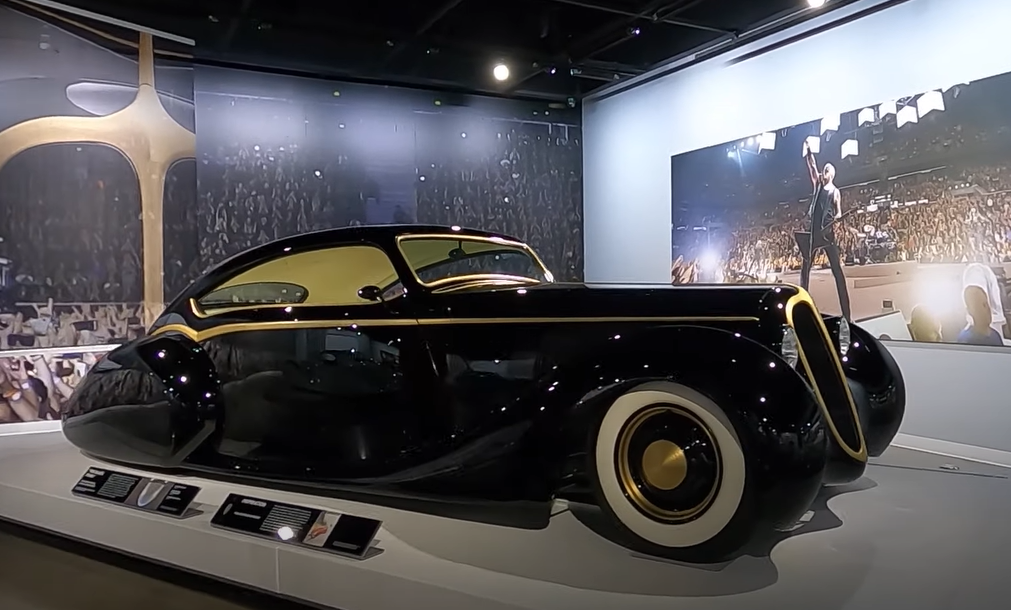 The James Hetfield Collection, Petersen Automotive Museum
The James Hetfield Collection, Petersen Automotive Museum
The 1948 Jaguar ‘Black Pearl’
Hetfield’s hired crew swapped out the original six-cylinder unit that generated 125 horsepower for Ford’s 305-cubic inch small-block engine, which generates an impressive 375 horsepower, and installed a C4 automatic.
They also installed new disc brakes at each wheel to replace the antiquated drum brake system, and added classic tires measuring 15 inches in diameter with a white sidewall to keep the vehicle looking like it was built in the '50s.
In the end, this beauty took home a Custom Of The Year award at a show in California. And, in the words of Hetfield himself, “The Black Pearl is my choice for the world’s greatest coupe”.
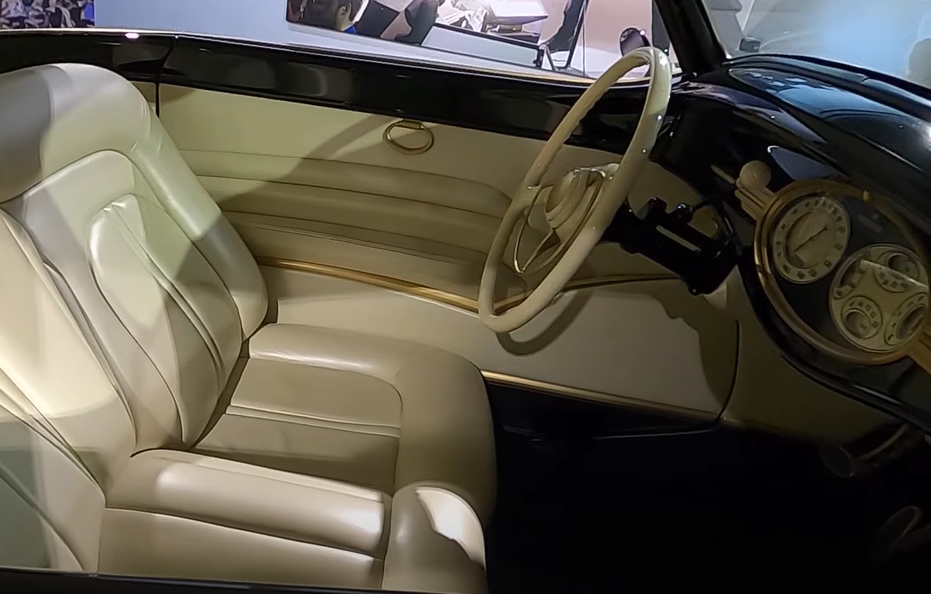 The James Hetfield Collection, Petersen Automotive Museum
The James Hetfield Collection, Petersen Automotive Museum
The 1952 Buick Skylark “Skyscraper”
While Rick Dore seems to be one of Hetfield’s go-to guys for custom work, it was his 1952 Buick Skylark restoration that sparked the loyal relationship. It was the first car he commissioned from Dore and his RD Kustoms crew.
The design was inspired by the Buick Roadmaster. They cut off the car’s roof and reworked the sides for a lower, sleeker profile. But that’s not even the coolest part.
The 1952 Buick Skylark “Skyscraper”
Aside from a stunning purple paint job, much of the detailing on the Skyscraper was musically inspired. For example, the accelerator is made from a kick-drum bass pedal, the gauges resemble Fender guitar picks, and it was displayed with a color-coordinated ESP electric guitar and a 2007 Mesa/Boogie Lone Star Special amp.
But this restoration job wasn’t all just color and design.
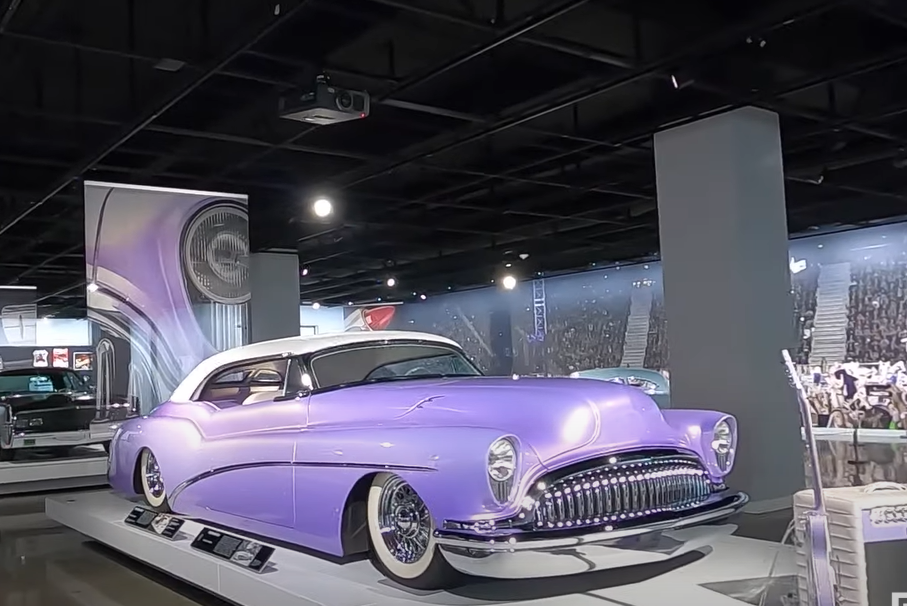 The James Hetfield Collection, Petersen Automotive Museum
The James Hetfield Collection, Petersen Automotive Museum
The 1952 Buick Skylark “Skyscraper”
Under the hood, you’ll find a 5.3-liter naturally aspirated V8 engine. It generates 124 horsepower and 220 pound-feet of torque. There’s a three-speed manual transmission hooked up to the motor. This set-up is said to allow the vehicle to go from 0-60 mph in 17.3 seconds and reach a top speed of 83 mph.
The old drivetrain was swapped out for a Chevrolet V8 with 350 cubic inches of displacement and automatic transmission. With all the upgrades and customization, Hetfield’s Skyscraper is worth more than $125,000.
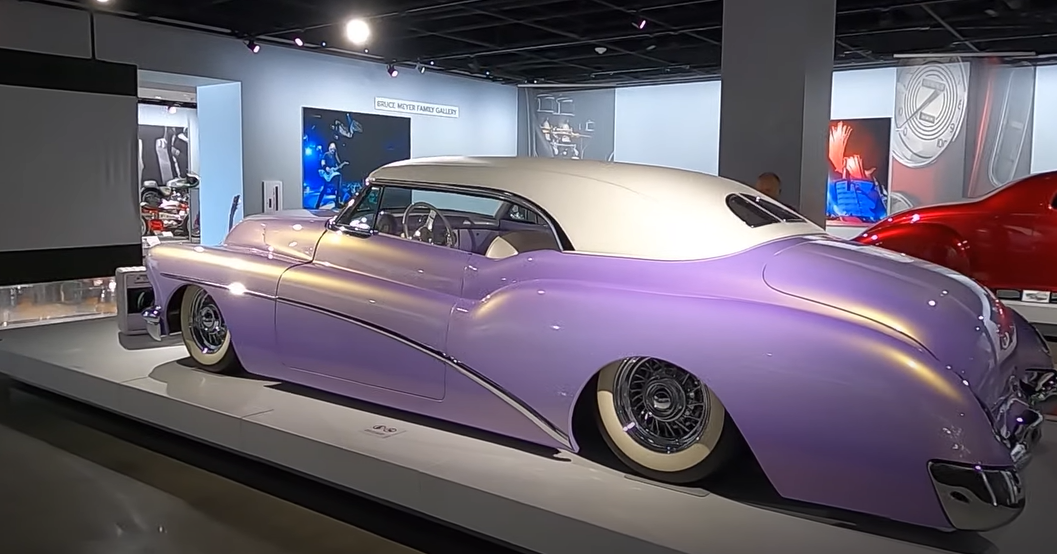 The James Hetfield Collection, Petersen Automotive Museum
The James Hetfield Collection, Petersen Automotive Museum
The 1956 Ford F100 'Str8 Edge’
Hetfield collaborated with Blue Collar Customs once again, and gave this broken down 1956 F100 pickup truck a hot-rod style makeover. He had apparently wanted a pickup truck for daily transportation—but with a hot rod design, of course.
An ancient Ford F100 from 1956 was donated for use in the build, and it had a flatbed and an expanded cab. The body work was said to be the most difficult part of the project—but so, so worth it.
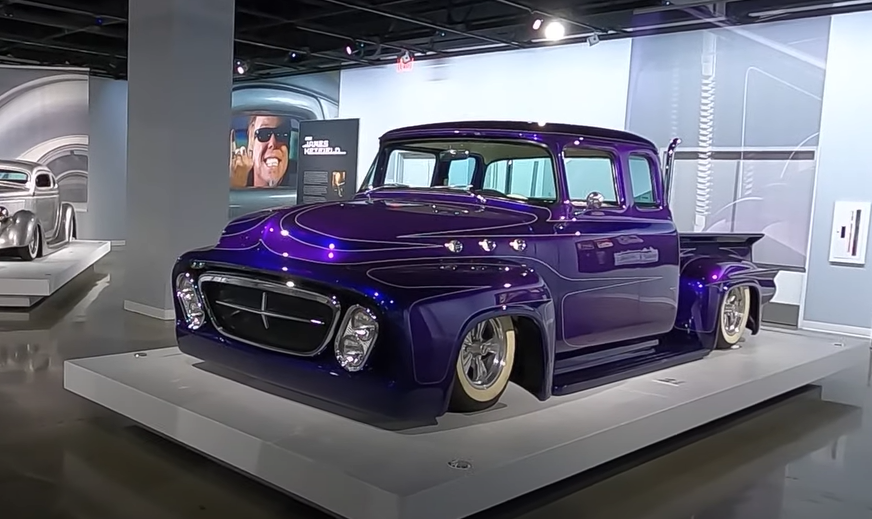 The James Hetfield Collection, Petersen Automotive Museum
The James Hetfield Collection, Petersen Automotive Museum
The 1956 Ford F100 'Str8 Edge’
Hetfield’s Str8 Edge was modified with rear-hinge doors, a two-and-a-quarter-inch chop, a set of headlights from a 1960 Ford pickup, and a grille from a 1960 Chrysler. The crew hand-built the rest of the extra body work, including the fenders, firewall, and side skirts.
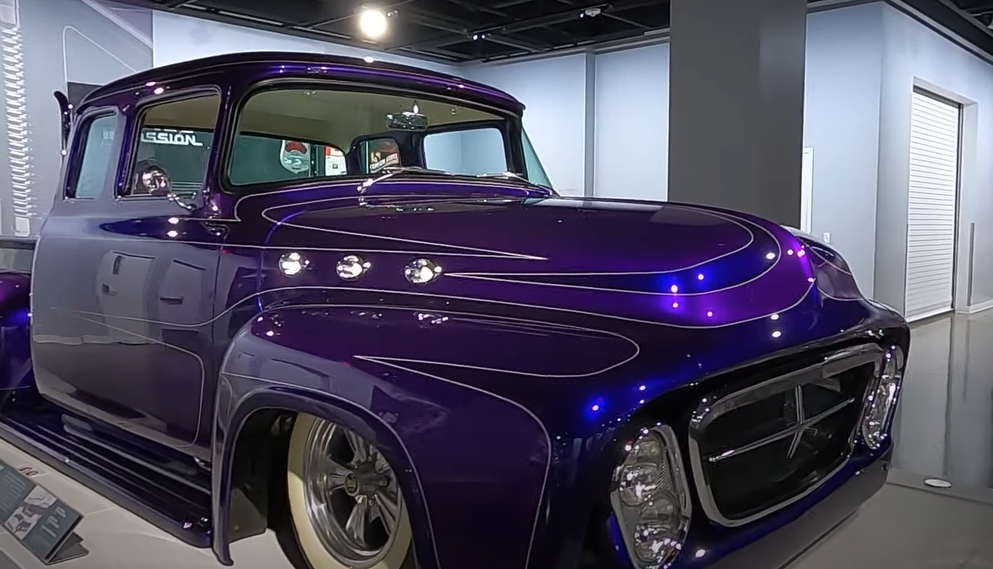 The James Hetfield Collection, Petersen Automotive Museum
The James Hetfield Collection, Petersen Automotive Museum
The 1956 Ford F100 'Str8 Edge’
The truck came with a 167-horsepower, 260-pound-foot 4.4-liter V8 engine, and while Hetfield didn’t replace the motor, he did have it modified for increased output. He also had an automatic transmission replace the manual four-speed that came standard with the truck.
After all was said and done, Hetfield’s Str8 Edge had more than $100,000 worth of work done to it.
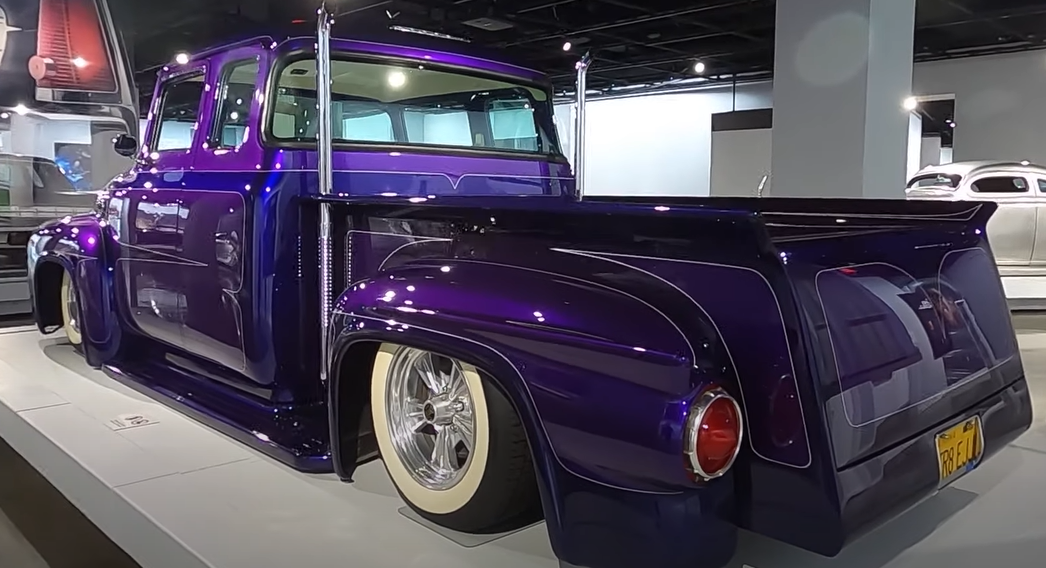 The James Hetfield Collection, Petersen Automotive Museum
The James Hetfield Collection, Petersen Automotive Museum
The 1961 Lincoln Continental ‘Dead Kennedy’
Hetfield’s 1961 Lincoln Continental has a dark name because it refers to the vehicle in which John F Kennedy was killed—and the design, which includes a jet-black exterior and rear-hinge doors with shaved handles, is just as somber.
With very minor help from Blue Collar Customs, Hetfield actually built this one himself. The vehicle has been fixed up and re-positioned. Everything that was outdated was replaced with new components stylistically similar to the originals. The car’s exterior boasts a flat black paint job, wide custom grilles, and a hard top.
The 1961 Lincoln Continental ‘Dead Kennedy’
The standard engine in the 1961 Lincoln Continental was a 7.0-liter (430 cubic inches) naturally aspirated V8 that produced 300 horsepower and 465 pound-feet of torque. It could accelerate from 0 to 60 mph in 10.5 seconds, and reach a top speed of 120 mph.
This vehicle is as cool as it is creepy.
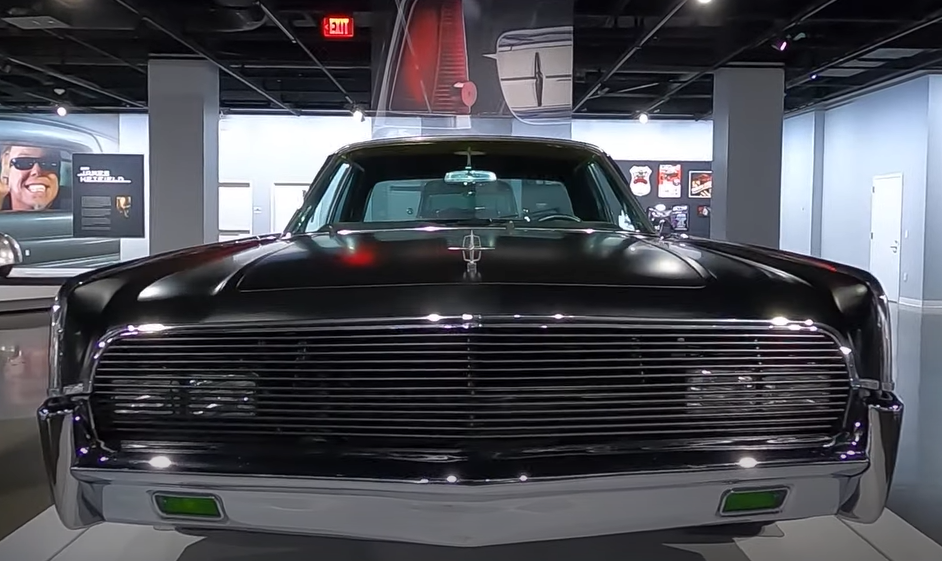 The James Hetfield Collection, Petersen Automotive Museum
The James Hetfield Collection, Petersen Automotive Museum
The 1967 Chevrolet Camaro
While this one is not technically in Hetfield’s rockin’ car collection today, it is still worth noting.
This stone-cold American classic appeared in Metallica’s “I Disappear” music video and then Hetfield kept it. He drove it for a few years and then decided to tidy it up and sell it to raise money for music programs in local schools.
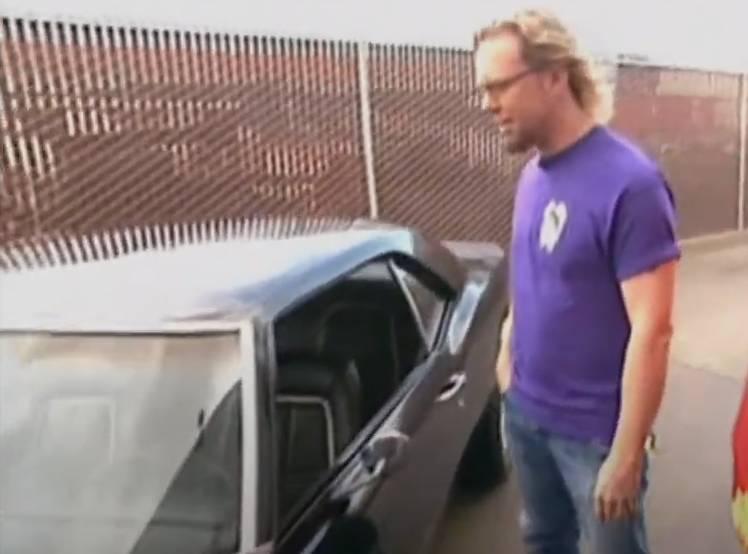 Metallica HQ Studio Room Tour with James Hetfield, And Metallica For All
Metallica HQ Studio Room Tour with James Hetfield, And Metallica For All
The 1967 Chevrolet Camaro
It now stands proudly on display at the Henry Ford Museum Cars & Guitars exhibit. While we couldn’t source any specific modifications done to this particular vehicle, we can still look under the hood of the basic 1967 Chevrolet Camaro.
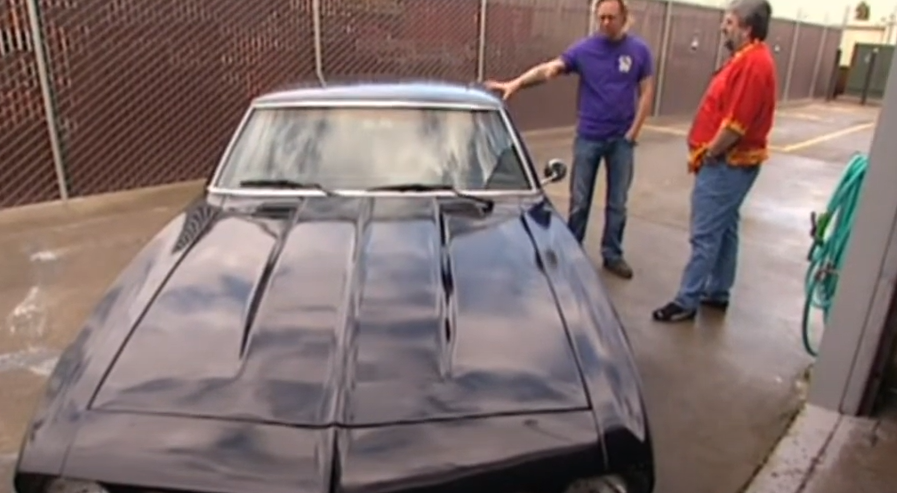 Metallica HQ Studio Room Tour with James Hetfield, And Metallica For All
Metallica HQ Studio Room Tour with James Hetfield, And Metallica For All
The 1967 Chevrolet Camaro
Under the hood, the 1967 Camaro was available with a range of different engine options, including a 3.8-liter, 4.1-liter, 4.9-liter, and 5.4-liter V8 engine. These engines were paired with a three-speed manual transmission or a Powerglide two-speed automatic transmission, depending on the driver's preference.
It could also pack a serious punch, with horsepower anywhere from 140 to 375, supported by a range of handling and suspension features.
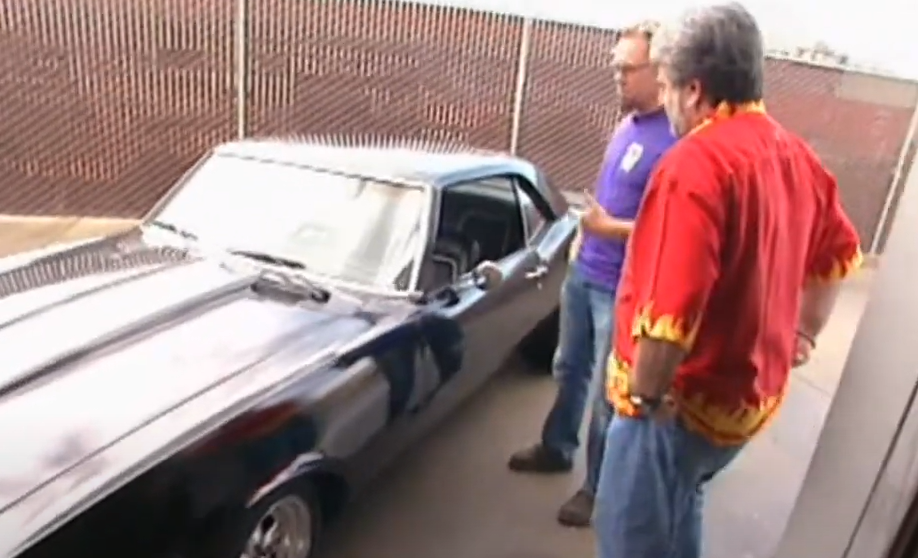 Metallica HQ Studio Room Tour with James Hetfield, And Metallica For All
Metallica HQ Studio Room Tour with James Hetfield, And Metallica For All
Where Are They Now?
While music might be his life, Hetfield’s car collection is a close second. He put a lot of time into the creation of each addition, making them essentially “priceless”. But today, his collection is no longer hidden in his garage.
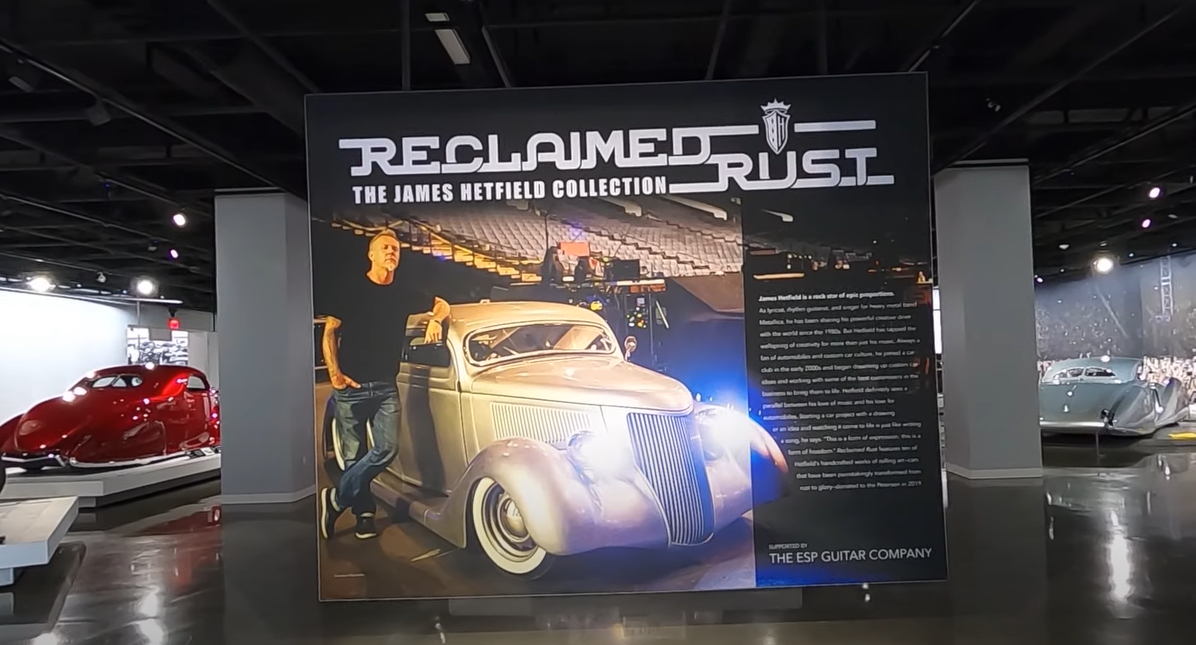 The James Hetfield Collection, Petersen Automotive Museum
The James Hetfield Collection, Petersen Automotive Museum
Sharing Is Caring
Hetfield recently donated his collection to the Petersen Museum for other auto-lovers to enjoy. “They weren’t doing me much good sitting in my garage,” Hetfield said. "I loved looking at them, but I didn’t want to auction them off and have them spread all over the world. This is a collection. It marks my life".
And we couldn’t possibly thank him more.
You May Also Like:
Inside Eddie Van Halen's Garage: These Are His Coolest Cars
Inside The Sultan of Brunei’s $5 Billion Dollar Car Collection
Sylvester Stallone's $4 Million Car Collection


